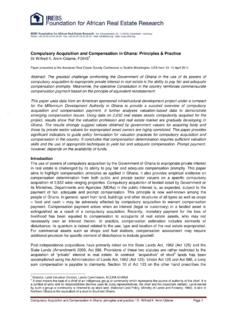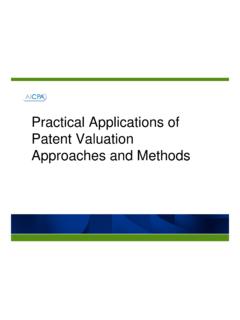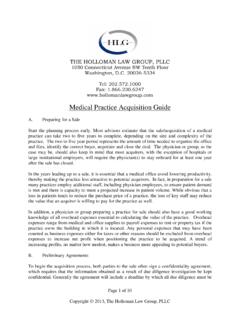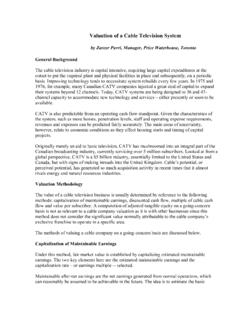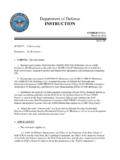Transcription of Valuation Analysis in Pharmaceutical Licensing and …
1 Valuation Analysis in Pharmaceutical Licensing and M&A transactions A Tutorial By Tim Opler, Benj Garrett and Susan Langer January 2014 2 I AGENDA Agenda Discuss role of Valuation and project assessment Introduce Valuation tools Show how to use the tools in business development Go over a variety of cases 3 I Table of Contents Creation and Business Development of Pharmaceutical Projects Forecasting Estimation Estimation Discount Rate Considerations in Licensing Considerations in M&A V A L U E C R E A T I O N A N D B U S I N E S S D E V E L O P M E N T 5 I VALUE IS CREATED BY INVESTMENT FOR FUTURE PROFIT Typical Value Creating Profile -100-50050100150200250300350123456789101 11213
2 Revenues and Costs Over Time ($ millions) Acquisition CostR&DLaunch CostSelling CostOther CostRevenue6 I PROCESS Value Creation Process Finding projects that fit Assessing the projects Negotiating deals for the projects in the face of competition Delivering on the potential of the projects Realizing the value Assessment and negotiation calls for strong Valuation and Analysis work. This is our focus today. 7 I HOW FINANCIAL Analysis FITS INTO STRATEGY Where Financial Analysis Fits into Business Development Strategy Financial Analysis What is the time horizon to peak revenues for each product? What will sales and marketing costs be?
3 What are the total cash requirements? What is the value of each product opportunity? Ability to Execute / Risks How achievable are the returns and how significant are the risks? Do we have the competencies to succeed? Can we control the key success factors? Fit with Future Strategy How does each product fit with our long-term vision? Are there other products in the pipeline to realize our goals? What is the opportunity cost of pursuing these initiatives? Perception of Wall Street / Shareholders? Is Wall Street likely to invest in a company pursuing these products? How has Wall Street responded to other companies that have adopted this strategy?
4 Evaluation Criteria 8 I Identify the Opportunity Initial Technical Evaluation Commercial Due Diligence Contract Negotiations Technical Due Diligence Detailed Technical Evaluation Detailed Commercial Evaluation Final Approval Example: Licensing Process at Bristol-Myers Squibb Source: Talk by BMS: The Role of Licensing / Business Development in the Pharma Industry , 2004. 9 I Product Profile / Pricing / Competition Sales Forecast P&L Assumption (COGS, S&M, R&D) Deal Terms Manufacturing / Tax Considerations PTRS Risk Adjusted NPVs & IRRs BRISTOL-MYERS SQUIBB Valuation PROCESS Bristol-Myers Squibb Deal Valuation Process 10 I PROJECT RANKING Assets Opportunity IDPTRS ENPV EIRRA ssets Opportunity IDPTRS ENPV EIRR192%370 535%256%3 29%278%120 345%2648%411 29%320%250 318%2725%129 27%480%182 301%2810%71 27%574%80 230%2982%837 26%658%80 230%3063%288 26%730%250 210%3140%12 26%885%80
5 90%3214%116 24%927%90 83%3321%137 24%1053%18 83%3421%132 24%1181%23 76%3543%183 24%1226%214 59%3614%8023%1359%582 58%3735%151 22%1472%87 54%3845%12 20%1562%1,400 48%3935%8 19%1636%77 42%4046%230 19%1740%27 41%4119%28 19%1824%371 40%4260%3 19%1926%102 40%4342%123 19%2089%1,538 35%448%15 18%2155%633 34%4531%52 18%227%100 33%467%22 17%2324%152 31%4718%7 15%2464%272 30%4838%6 13%Bristol-Myers Squibb Ranking of Potential Licensing Deals PTRS = probability of technical and regulatory success eNPV = expected NPV eIRR = risk-adjusted internal rate of return Illustrative Table by Kazuo Edaza of BMS Source: Talk by Kazuo Ezawa, Bristol-Myers Squibb, Pharmaceutical Portfolio Management , DAAG, February 2004.
6 11 I TODAY S DISCUSSION Our Approach The approach that we will discuss today is very similar to that used by Bristol-Myers Squibb. In fact, almost every large Pharmaceutical company uses the same approach to deal Valuation . Consulting firms like BCG, Campbell Alliance, LEK, Mattson Jack and McKinsey have standardized the industry in this way. A key area of emphasis from us is to keep an eye on risk-adjusted returns in transactions . There are numerous fine points and ways in which firms differ in approach. We will discuss many of these but the key focus will be on the hands on how to approach to Valuation .
7 12 I VALUE IS CREATED BY INVESTMENT FOR FUTURE PROFIT General View: Go Big and Go for IRR / ROI to Create Value The key to creating lasting value is to bet big and win. ROI (IRR) Scale of Project Big Project Big Payoff (The zone of shareholder bliss) Big Project Low Payoff Small Project Low Payoff Small Project Big Payoff Examples in Specialty Pharma Allergan Botox Biovail Wellbutrin XL Cephalon - Provigil ENDO lidoderm patch Forest Lexapro Gilead - Truvada King Altace Reliant - Lovaza Salix Rifaximin Viropharma - Vancomycin 13 I TODAY S DISCUSSION Some Key Differences Across Pharmaceutical Firms - Method Sometimes employ real options tools in project assessment.
8 The idea is to look at a drug development project as a sequence of choices or options. The most important insight is the option to abandon a project is valuable. A further insight involves the value of the option to expand indications. Focuses largely on pie splitting the sharing of the rNPV of a project. Other inputs like IRR are not looked at all. Have historically used higher discount rates for risky projects but without risk-adjustment. Big Pharma A, B, C Biotech A 14 I TODAY S DISCUSSION Differences Across Firms - Process An organization called that carries out financial Analysis of Licensing and M&A projects.
9 They have prepared an internal manual on how to value every aspect of a project which standardizes their approach. Tends to do careful Valuation work with reasonable discount rates. Always have at least three scenarios. Organization tends to be intelligent but financially conservative in looking at opportunities. Will occasionally look at real options and offer option deals to biotechs. Has created a management science group that engages in sophisticated predictive modeling of pharma product performance. Their view is that good forecasts are the most important and most difficult aspect of pharma Licensing . This group has been driving real options work but hard for organization to grasp.
10 The focus is much more on simplicity, insight and medical soundness than say Big Pharma E. Every projects gets summarized on two pages (and not more ever) for either the head of commercial or the head of R&D. Once there is a preliminary approval an AIF (autorissation investiment financiere) is prepared (30 to 50 pages). This document does not skimp on commercial Analysis but uses basic rNPV models. Big Pharma D Big Pharma E Big Pharma F V A L U A T I O N O F P H A R M A C E U T I C A L P R O J E C T S 16 I NET PRESENT VALUE Q: Suppose we can invest $50 today & receive $60 later today. What is our increase in value?

